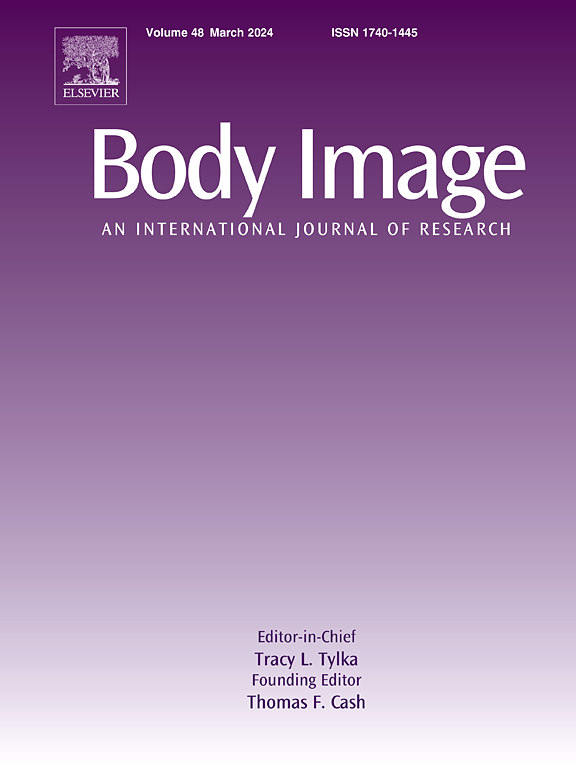"确保每个人都能感受到自己的位置":了解并促进大学的外貌包容性。
IF 5.2
1区 心理学
Q1 PSYCHIATRY
引用次数: 0
摘要
外貌问题是影响许多大学生的一个普遍问题,也是社会心理和学业成绩不佳的原因之一。为了解决这些问题,大学需要采取行动促进外貌包容性。本研究采用归纳定性方法,探讨学生的生活和/或人生经历、与外貌有关的问题以及对如何实现大学外貌包容性的看法。来自英国一所大学的 17 名年龄在 19-55 岁之间的学生参加了在线半结构式访谈(12 人)和焦点小组(5 人)。其中 13 人为女性,3 人为男性,1 人为非二元性别。对访谈和焦点小组进行了逐字记录,并采用反思性主题分析法进行了分析。学生们指出了外貌问题对他们产生负面影响的几种方式,并支持在大学中加强对外貌包容性的关注。由此形成了三个主题1) 外貌对我的大学生活有很大影响;2) 并非对每个人都一样(即个体差异和交叉性影响学生的经历);3) 需要有意识的改变(即改变是提高外貌包容性所必需的,但应有意识地进行思考)。提高外表包容性的战略应优先考虑并仔细斟酌,以避免象征性的做法,并确保这些战略以代表性不足群体的需求为中心。本文章由计算机程序翻译,如有差异,请以英文原文为准。
“Make sure that everybody feels there is a space for them”: Understanding and promoting appearance inclusivity at university.
Appearance concerns are a pervasive issue affecting many university students and contributing to poor psychosocial and academic outcomes. To combat these, action is needed by universities to promote appearance inclusivity. The current study used inductive qualitative methods to explore students’ lived and/or living experiences and concerns relating to their physical appearance and views on how to achieve an appearance inclusive university. Seventeen students aged 19–55 from a UK university participated in online semi-structured interviews (n=12) and focus groups (n=5). Thirteen participants were women, three were men, and one was non-binary. Interviews and focus groups were transcribed verbatim and analysed using reflexive thematic analysis. Students identified several ways appearance concerns had negatively impacted them and supported an increased focus on appearance inclusivity at university. Three themes were developed: 1) appearance has a big impact on my university life; 2) it’s not the same for everyone (i.e., individual differences and intersectionality impact students’ experiences); and 3) intentional change is needed (i.e., change is necessary to improve appearance inclusivity, but it should be consciously thought out). Strategies to improve appearance inclusivity should be prioritised and carefully considered to avoid tokenism and ensure they centre the needs of those from underrepresented groups.
求助全文
通过发布文献求助,成功后即可免费获取论文全文。
去求助
来源期刊

Body Image
Multiple-
CiteScore
8.70
自引率
28.80%
发文量
174
期刊介绍:
Body Image is an international, peer-reviewed journal that publishes high-quality, scientific articles on body image and human physical appearance. Body Image is a multi-faceted concept that refers to persons perceptions and attitudes about their own body, particularly but not exclusively its appearance. The journal invites contributions from a broad range of disciplines-psychological science, other social and behavioral sciences, and medical and health sciences. The journal publishes original research articles, brief research reports, theoretical and review papers, and science-based practitioner reports of interest. Dissertation abstracts are also published online, and the journal gives an annual award for the best doctoral dissertation in this field.
 求助内容:
求助内容: 应助结果提醒方式:
应助结果提醒方式:


